A premiere and a persuasive start to Brahms cycle from Nelsons and BSO
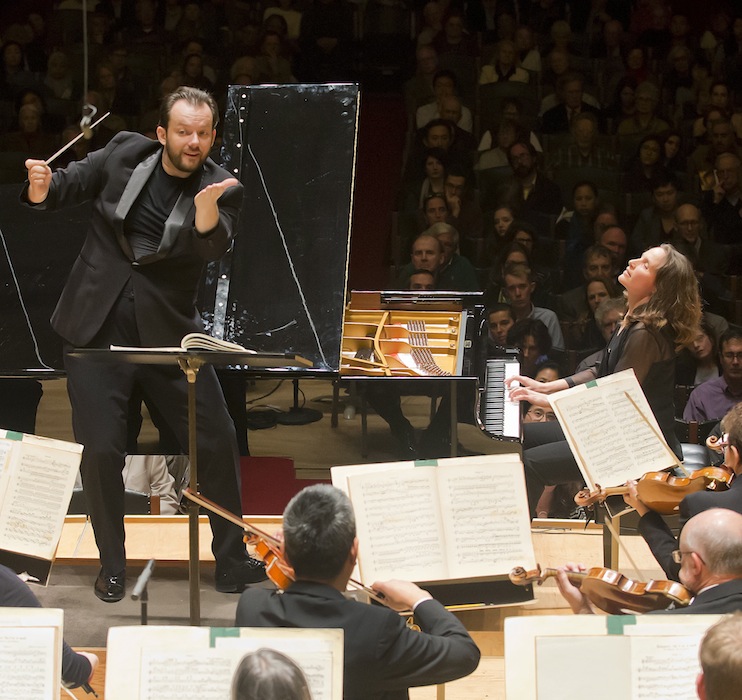
Hélène Grimaud performed Brahms’ Piano Concerto No. 1 with Andris Nelsons and the BSO Tuesday night. Photo: Winslow Townson
The Andris Nelsons era with the Boston Symphony Orchestra was largely grounded in the standard repertoire in the music director’s inaugural season. Yet new music has been a prominent feature in concerts that have taken place this fall. The next two weeks alone will spotlight new works alongside the complete symphonies and piano concertos of Brahms.
Tuesday night at Symphony Hall, Nelsons led off this mini-festival with a blazing premiere of Eric Nathan’s the shape of a door. This is his second commission for the Boston Symphony Orchestra organization—his chamber work Why Old Places Matter was premiered by the Chamber Players in January 2015.
Nathan’s music is clean and shot through with rhythmic vitality that recalls the music of his mentor, the late Steven Stucky. Like that buzzing chamber score, the shape of a door conjures images of a physical space–in this instance a large cathedral as experienced when entering through the large entryway. The piece, which runs to eleven minutes in length, is filled with resonant harmonies that are left to hang in space.
As with Stucky’s style, its formal design and dramatic shape is seamless. An opening twinkle in the strings explodes into a wall of sound rife with brassy fanfares and bright orchestral colors. Wind riffs dominate the inner sections, but they are fractured, and, at times, dissolve to little more than single notes sounding in quick crescendos. A driving section follows where lightening passages shoot about the score. The piece closes on a single sustained pitch left to float in the air like a cloud. Nelsons led a reading of bold commitment, and the audience showered Nathan with warm applause when he took the stage for bows.
Though Brahms’ music is a staple of the repertoire today, it was once cutting-edge as well. His Piano Concerto in D minor, heard Tuesday night, received a cool reception in Leipzig in 1858 due its sheer length and mix of concerto and traditional symphonic elements.
The evening’s soloist, French pianist Hélène Grimaud, has a reputation for making well-traveled works such as this sound new. Her interpretations are often personal, even daring, recalling the broad tempos and not-so-subtle dynamic choices Glenn Gould made in his infamous live recording of the work with Leonard Bernstein.
While not nearly as provocative as that performance, her rendition captured the wide dramatic range of this difficult piece. She played with soft touch, which created a sound that was smooth and sophisticated in the opening figures. In other places, she brought out the left-hand arpeggios, the music cresting and breaking like waves. The fuller sections had Dionysian flare, with Grimaud supplying her phrases with a stark power that had just the right amount of edge to the tone. The climactic passages that close the first movement bustled with intensity and drew early applause, and the whip crack lines of the final movement had a fiery energy and intensity.
Grimaud and Nelsons were simpatico partners throughout, and the two share the same feel for the lyrical qualities of the work. Nelsons coaxed orchestral playing of sumptuous colors, and Grimaud answered with phrase of subtle elegance in dialogue. The second movement was poetic and beautifully sensitive, with Grimaud’s lines sounding little more than a whisper.
After intermission, Nelsons led a rich and persuasive account of Brahms’ Symphony No. 1 in C minor.
Brahms worried about living up to Beethoven’s legacy, and his First Symphony, which he carried for more than twenty years recounts that lingering influence. The work, with its journey from dark C minor to triumphant C major, has the same dramatic arc as Beethoven’s famous Fifth. And the principal theme of the finale resembles the “Ode to Joy,” to which Brahms commented when the similarities were pointed out, “any ass can see that!”
Works like this one seem tailor-made for Nelsons, who led a reading of surging energy and vitality that took time to smell all of the roses. The pizzicatos of the finale were placed gently and precisely, the wind solos in the first and third movements subtly shaped, and the work’s countermelodies sounded with clarity as they wound their way through Brahms’ thick orchestration. The conclusion had bite and brought to the symphony to a rousing conclusion.
The highlights of the evening belonged to the BSO winds. John Ferrillo’s oboe was like a weeping willow in the first movement, and James Sommerville’s horn added pastoral warmth to his solo in the finale.
The program will be repeated 8 p.m. Thursday. Brahms’ Second Symphony will be played along with the concerto and Nathan’s the shape of a door 1:30 p.m. Friday and 8 p.m. Saturday at Symphony Hall. bso.org; 888-266-1200
Posted in Performances
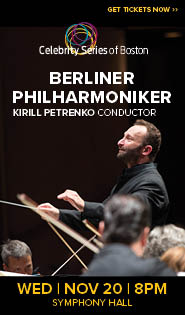
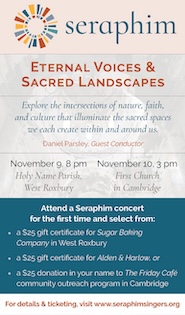
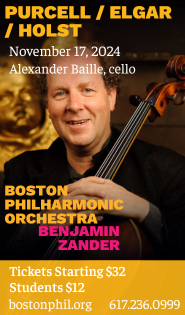
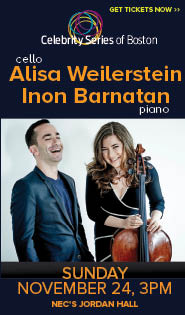
Posted Nov 09, 2016 at 1:03 pm by Mary McGagh
Thank you for a brilliant review of a thrilling performance. It was an experience that I will always treasure.
I attended a stunning performance by Hélène Grimaud, Beethoven’s Concerto No. 4, in Paris last April and again in NY City in 2013. In Paris it was with the Orchestra dell’Accademia Nazionale di Santa Cecilia, Sir Antonio Pappano, conductor. At Lincoln Center, NYC, it was with the London Philharmonic Orchestra, Vladimir Jurowski, conductor.
Posted Nov 09, 2016 at 1:28 pm by mrravioli
The highlight IMO is the second movement of the C minor Symphony. I love Brahms’ thick orchestration sound but mostly in the bloody, rushing Adagios and Allegros. For slow movements, I thought we’re more than sufficient with Bruckner or Mahler. But yesterday’s concert totally changed my mind. My soul left my body in the Andante’s ten minutes and then was tore into pieces and melt down when our respected first violin played the solo melody to bring the movement into the climax. After the movement, the gentleman beside me murmured “BEAUTIFUL” and that’s exactly what I want to say (a thousand times).
The D minor Concerto, however, was not a perfect fit for my taste. I respect Ms. Grimaud’s skill and rendition, but maybe my ears are just spoiled too much by Gould and Gilels’ manly sound.
Last but not least, Mr. Nathan’s ‘Space of a Door’ is a very good piece and a perfect prelude to the whole Brahms evening. It’s always enjoyable to listen to new works played by world-leading orchestras and I’m happy to see BSO’s open mind to contemporary works.
Extremely good concert overall. Thanks to all the artists.